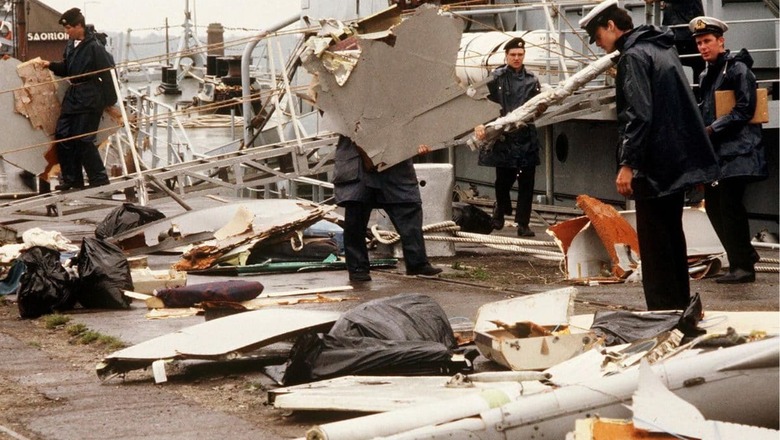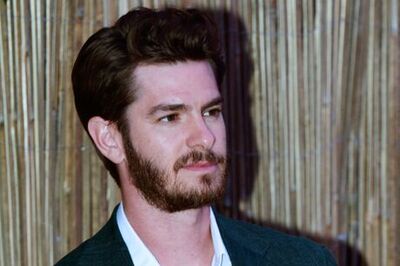
views
The diplomatic ties between India and Canada have hit a nadir after Prime Minister Justin Trudeau accused New Delhi for the murder of Hardeep Singh Nijjar, a Khalistani terrorist, in British Columbia’s Surrey. While the Khalistanis, true to their calling, have now threatened to target the India mission in Ottawa and consulates in other cities in that country, the Canadian media, in coordination with their Western counterparts, in an ostrich-style of reporting, have been busy sanitising Nijjar’s criminal past by projecting him as a “temple leader”. One newspaper has gone to the extent of calling him “a tireless campaigner and fatherly figure” who would do temple works “with his own hands”.
This is shocking, especially for those who have not been closely tracking Canada’s internal politics and its Khalistani links. After all, this is not the first time Indians and the Indian mission have been targeted in that country. In the 1980s, even as Bill Warden, Canada’s high commissioner then, was assuring India’s foreign secretary on “the upgraded security being provided at Indian missions” in Canada, as he recalls in his 2017 memoirs, Diplomat, Dissident, Spook, “an armed gunman walked into the consulate general in Toronto, fired some shots, and then slipped away unimpeded”.
Such was the failure of the Canadian authorities in handling the Khalistani terror in the ’80s that Warden “was summoned to the (Indian) foreign ministry to receive strong protests on some eighteen occasions”. And like Nijjar today, there was then Talwinder Singh Parmar, a dreaded Khalistani terrorist who was gunned down in Punjab in 1992 but almost a decade back he had forewarned that “Indian planes will fall from the sky”. This actually happened a few years later with the Kanishka Air India bombing in 1985, but Parmar remained a free man in Ottawa.
Parmar was the same person who was refused extradition by Canada in 1982 despite repeated Indian requests. In fact, when India sought his extradition in 1982, Ottawa went to the ludicrous extent, saying the extradition protocols between Commonwealth countries would not apply because India only recognised Her Majesty as Head of the Commonwealth, and not as Head of State!
The Kanishka Air India bombing, until 9/11, was the deadliest terrorist attack in history. But while the 11 September 2001, attack saw the initiation of the “war against terrorism”, the 1985 tragedy went largely ignored in the West, with Canada seeing it as India’s problem: This despite the fact that of the 329 dead, 268 were Canadian citizens, mostly of Indian descent, while 27 were British and 24 were Indian citizens.
As Canadian journalist Terry Milewski writes in his well-researched book, Blood for Blood: Fifty Years of the Global Khalistan Project (2021), “The cause for which the bombers fought went nowhere. The investigation took twenty years. Except for the victims’ families, it seemed that nobody was interested in the Air India bombing… All of their families were left to fend for themselves in navigating the aftermath, the funerals and the formalities.”
Among others, Milewski tells the story of one Susheel Gupta, who was only 12 when he went with his father to Ireland, looking for the body of his mother, Ramwati, who was killed in the plane bombing. “By the time the judicial inquiry started, Gupta was thirty-three and a federal prosecutor in Ottawa. But he remembered. ‘Canadian government officials did not seem to care at all,’ he said. ‘This was not their tragedy to deal with, but India’s. Didn’t matter that we were Canadian citizens.’”
Such was the indifference, if not disdain, for the tragedy that the victims’ families wondered “If it were an Air Canada plane full of white people, would the government have been so indifferent?”
Susheel Gupta, even at the height of his personal bereavement, couldn’t stop noticing the contrast between the Canadians and the Irish people in approaching this man-made tragedy. “When they were caught in the rain, there was someone (Irish people) to help: ‘Neither my father nor I had a raincoat. As we were walking, a group of three Irish people walked up to us, greeted us. We were crying. They hugged us and then took off their own raincoats, handed one to my father as another one of the three individuals put his jacket upon me, buttoned it up, pulled the hood over my head and told me to keep the jacket … I still have the raincoat to this day.’” Both before and after the Kanishka, Canada and its ‘original’ citizens failed to act with the sensitivity the tragedy deserved.
But the 1985 bombing wasn’t just about the racist indifference of White Canada for its ‘brown’ citizens. Just like Justin Trudeau is today busy turning a criminal into a victim and, worse, accusing without any substantial proof the world’s largest democracy of indulging in a murder in another country, the 1980s Canada too turned a blind eye to, first, when the Paramar-led Khalistanis vowed to bring Indian planes down, but also later denied if there were any prior intel warning of an attack on Air India.
In 1987, two years after the Kanishka bombing, Canada’s solicitor general James Kelleher told the parliament that nobody could have seen the Air India bombing coming: “I should point out to the House that there was no indication that there was a specific threat to Flight 182!” Sixteen years later, in 2003, he found support from Solicitor General Wayne Easter, who stated that the police and security services “were not in a position to know that there would be a terrorist attack on an Air India aircraft”. Interestingly, Kelleher was a Conservative minister, while Easter was a Liberal!
Facts tell a different story, however. As Milewski brings out eloquently, “Beginning in 1982, Canada’s security services knew that a terrorist group, the Babbar Khalsa, was operating in Canada; that it had dozens of killings on its record; that its leader, Talwinder Parmar, was wanted for murder; and that he was preaching that ‘Indian planes will fall from the sky’. That’s why CSIS — the Canadian Security Intelligence Service — watched and wiretapped Parmar for three months before the Air India bombing, starting in March 1985.”
“The surveillance made it plain that Parmar was intent on violence — so plain that Ray Kobzey, the CSIS agent in charge of watching him, immediately exclaimed on hearing that Flight 182 had gone down, ‘Parmar did it!’”
Still, Parmar and others roamed free in Canada. To this day, of at least nine main accused, only one man has been convicted — the man who built the bombs.
Several credible warnings were available beforehand suggesting a threat to the Air India plane in Canada, but authorities in Ottawa refused to look at them. Maybe they just didn’t care. In August 1984, for instance, Gerry Boudreault, a French-Canadian criminal, told the Royal Canadian Mounted Police (RCMP) that some Vancouver Sikhs had offered him $200,000 in cash to smuggle a bomb onto Air India’s flight from Montreal to London — Flight 182. He refused and went to the police. But the cops kept looking the other way.
There was also one Harmail Singh Grewal, a Sikh, who informed the Vancouver police about the plot to blow up an Indian plane. Grewal, in fact, talked about the plan to bomb two planes, which proved to be correct. The transcript of the talks between Grewal and the police is self-revealing:
Officer: There’s a plot to put a bomb on an airplane right?
Grewal: They said, yeah.
Officer: Ok
Grewal: Maybe two.
Officer: Maybe two airplanes?
Grewal: Well is it two, two, two, yeah. I heard their problem, they say if it doesn’t blow, what happens? They said… Some extra…
Officer: A backup bomb?
Grewal: Yeah.
Officer: What kind of airplane?
Grewal: Air India 747
Officer: Air India 747. Is this going to be leaving from Montreal?
Grewal: Yes.
Officer: And it’s going to be, when?
Grewal: Well I don’t know the exact date, you know, the time. A flight leaves only from Montreal in Canada.
The Canadian administration may continue to repeat the lie, but the fact is that there was not just vague but “specific warning” about Flight 182 being on the radar of Khalistani terrorists. After all, Air India’s flight from Toronto to Montreal and London, once a week, was the only flight the airline operated in Canada.
The story of Canadian indifference — one should call it collusion — doesn’t end there. Milewski writes how two weeks before the bombing, Parmar, with an accomplice, travelled to Toronto, preaching at the Malton Gurdwara near the airport. The next day, 10 June, an informer told the local police that people at the gurdwara were warned “not to fly Air India as it would be unsafe”.
Later that very month, Air India Flight 182 exploded mid-air killing 329 people. More would have been killed had the second bomb not blown up on the ground at Narita Airport in Japan as the bags were being moved to Air India.
Today, when the Western media is ignoring the Canadian complicity in pushing and promoting Khalistani terror in the name of “freedom of expression”, besides calling one of its terrorists a “temple leader” and a “fatherly figure”, it’s important to look back at the 1980s, especially the tragic Kanishka bombing and how a similar Canadian attitude led to the killing of hundreds of people and inflicting untold trauma to thousands others.
The era of clubbing terrorists with freedom fighters is mostly gone — and rightly so. Only a few pariah states, such as Pakistan, still pursue such obsolete, dangerous ideas. Canada, more so under Trudeau, seems to be going the Pakistan way. By defending Ottawa for its acts of omission and commission, the West is committing a hara-kiri similar to what it did in the Af-Pak region in the 1980s and after, resulting in two planes crashing into two iconic towers in New York in 2001.
Before coming to Canada’s support, the West should relook its role in the Kanishka bombing and after. If the West’s terrorists are India’s terrorists, then the latter’s terrorists cannot be the West’s “father figures”. If not checked now, these extremists would one day haunt the West just the same way Osama bin Laden and his fidayeen did in 9/11 and after.
(This is the second part of the two-part series.)
Views expressed in the above piece are personal and solely that of the author. They do not necessarily reflect News18’s views.
















Comments
0 comment